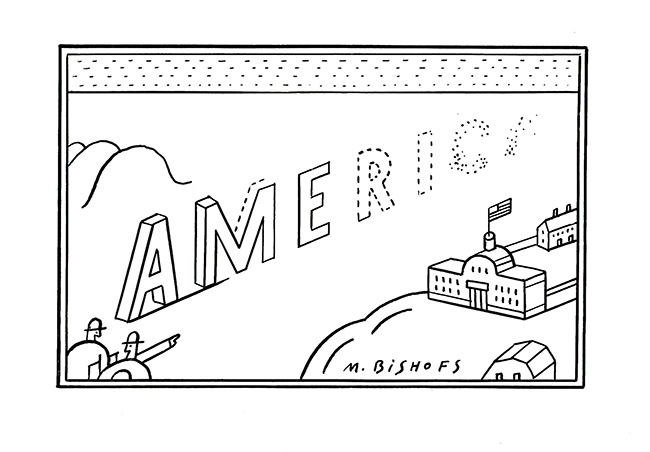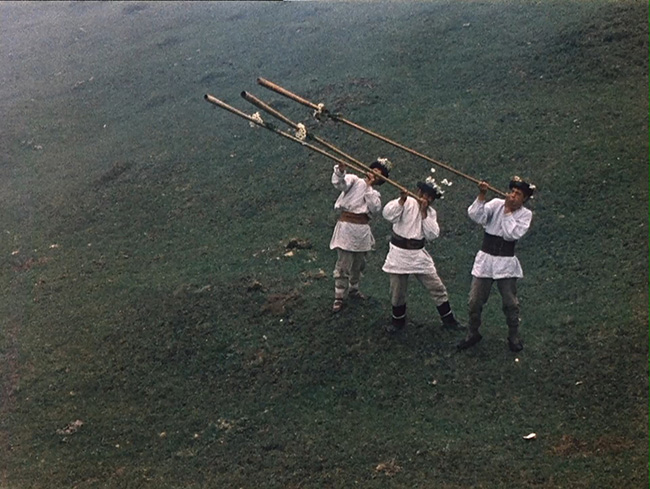
Cēsis Art Festival 2019: highlights
04/07/2019
This summer running from 6 July through 18 August Cēsis Art Festival will surprise with an extensive visual arts programme, concerts, an open-air production of the Westside Story musical, film screenings and theatre performances.
Continuing to mark the centenary of Latvia’s statehood, it is centred around the subject of national culture in the global age. The core of the extensive visual arts programme is formed by a multimedia exhibition Close-Up at the future Cēsis Centre for Contemporary Art. A number of concerts will be dedicated to musicians of the Latvian diaspora, film programme Mountains selected by Jānis Putniņš, performances of the best productions of the most recent theatre season and the grand open-air musical event ‒ this year, it is a production of the Westside Story, the most famous among Leonard Bernstein’s musicals.
Exhibition CLOSE-UP
EDVĪNS STRAUTMANIS Retrospective
July 6-August 18
 Edvīns Strautmanis, Yellow dancing black, 1986. Acrylic on canvas, 92x75.
Edvīns Strautmanis, Yellow dancing black, 1986. Acrylic on canvas, 92x75.
Cēsis Art Festival opens on 6 July with the unveiling of the Close-Up exhibition, centred around the issue of national art in the global age, one that is particularly topical in the 21st century. The visual art exhibition Close-Up is a multimedia project involving both the genre of artistic research and the traditional format of art exhibition. The show is hosted by two venues ‒ the future Cēsis Centre for Contemporary Art, housed in the former industrial territory of the Cēsis Association for the Blind (curators Daiga Rudzāte and Žanete Skarule) and Cēsis Vidzeme Concert Hall (curator Dace Lamberga).
The project focuses on prominent figures who have in common their Latvian roots and having succeeded in leaving their mark on the context of global culture. One of the artists among them is the Latvian-born American expressionist Edvīns Strautmanis, whose large-scale paintings are held in a number of prestigious American museum and private collections.
This is the first Edvīns Strautmanis retrospective of this scope in Latvia. Several of the fifteen large-scale paintings on view have never been shown before. Strautmanis large-scale works will be accompanied by stories and reminiscences about the painter by his contemporaries and family members.
The art of Edvīns Strautmanis (1933–1992) can clearly be linked with action painting; his individual style was definitely influenced by Willem de Kooning, the expressive Dutch American artist who was raised in the European tradition and whose painting is referred to as gestural abstraction. Strautmanis painted with acrylic on large-scale canvases laid out on the floor. The wide brushstrokes were applied criss-cross or diagonally with huge brushes, brooms, even rakes, putting an enormous intensity of physical and mental energy into each movement of the arm. The artist called these pieces colourful calligraphic strokes, emotions encapsulated in time and space.
The most significant and creative period of the painter’s career is linked with New York, where the Strautmanis family moved from Chicago in 1971. Their loft/studio in Greene Street, SoHo, became a meeting place for friends and like-minded artists; a very young Julian Schnabel was frequently among those gathering around the table on these evenings. A wall in the loft still features a drawing by Jean-Michel Basquiat, which the artist, known as Samo at the time, made while visiting his friend Vincent (the son of Edvīns and Irja Strautmanis).
In New York, one of the greatest admirers of Edvīns Straumanis’ art was the legendary art collector and gallerist Allan Stone (1932–2006), who purchased a significant number of the painter’s works. It was comparatively recently – in 2015 – that an exhibition of Strautmanis’ paintings ran in the Allan Stone Projects space.
Close-Up: a story of Latvian artists in New York

Close-Up is a story of resilience, joy, daring and vitality – a story of Latvian artists in New York, one of whom, Svens Lūkins, the rising star of the 1960s American art scene, in 1972, at the height of his career, announced his decision to severe ties with the influential Pace Gallery and never again show his art in any commercial institution. Still remembered today, this was a vivid episode of the New York art life of the time.
This is the first time since 1987 that objects by Sven Lukin, his three-dimensional paintings that took the New York art world by surprise in the 1960, are on view in Latvia.
New York – the global epicentre of art, the most significant point of reference on the creative map of the world since the mid-1900s – has always been something like the Promised Land to the ambitious, talented, reckless and strong. It has always been seen as a city where the streets are filled with the air of freedom. And it was the ultimate opposite of the world behind the Iron Curtain when Māris Bišofs arrived there after leaving Latvia in the 1970s. His filigree virtuosic drawings, frequently based on paradoxes of life and always laced with a dose of wit and erudition, became a trademark part of the pages and covers of periodicals like The New York Times, Village Voice, The New Yorker, The Wall Street Journal for many years. The Close-Up exhibition features the artist Māris Bišofs’ works from his New York period, his drawings for The New Yorker and The New York Times. Exhibition features also the world-famous photographer Robert Mapplethorpe’s favourite model Dovanna Pagowski and the painter Vija Celmins (Vija Celmiņa) as well as younger generation of artists - Artūrs Virtmanis, Indriķis Ģelzis and Signe Baumane who are New Yorkers nowadays.
The Festival's opening concert 'LNSO, Ķeniņš and Messiaen'
July 6

The Festival's opening concert 'LNSO, Ķeniņš and Messiaen' will be the first performance in Latvia of Tālivaldis Ķeniņš’ beautiful and powerful Eighth Symphony with its prominent organ solo performed by the internationally acclaimed Iveta Apkalna. There is a profound spiritual power and lucid beauty to this symphony, performed in this programme back-to-back with one of Messiaen’s later masterpieces, his Un Sourire (A Smile), a gently jocular tribute to Mozart that will indeed make you smile after listening to it.
Part Two of the concert will open with a piece by another centenarian, Alberts Jērums. Jērums was famous as the leader of the London Latvian choir, an influential organiser of the Latvian expatriate Song Festival events and also a modernist composer, although we are less familiar with this aspect of his contribution. Jērums’ Andante for symphony orchestra has survived as a score manuscript scattered with half-faded note signs; a restoration was necessary. One of the most prominent Latvian composers, Jēkabs Jančevskis, undertook the job of studying the score and filling in the missing parts. We are looking forward to listening to an example of the symphonic language of the composer familiar to us as the author of filigree choral and chamber music.
The programme concludes with Claude Debussy’s La Mer (The Sea) – vibrating, enticing, volatile and alive.
Film programme MOUNTAINS
by the Spoguļklintis cliffs
July 12, 19, 26

In recent years, the Cēsis Art Festival film programme has demonstrated its potential to offer cinema aficionados both an unusual viewing experience and a high-quality and diverse selection of pictures. Staying true to the trend of a close link between the programme and the screening venue that has emerged in previous years, the leitmotif of this year’s film programme, selected by Jānis Putniņš, is the subject of mountains.
Four weekends and unique open-air screenings of four films by the Spoguļklintis cliffs at the Cīrulīši Nature Trail.
Mountains can bring to mind various associations; they can make us think not only of danger, hardship, asceticism or solitude but also of divine beauty and magnificence. Mountains also exude a mysterious otherness to those who are used to casting their gaze over flatlands. Therefore, this film programme could also be described as an encounter with otherness in its various manifestations, be it the world of Buddhism, mountaineering or unworldly love.
Ever since the Cēsis Art Festival film programme is being screened outdoors, each year the selection features a Latvian-made picture, digitised and restored especially for the event. This year it is the 24–25 Does Not Return detective movie (1969). Although the action is predominantly set in an urban environment, the film also contains an impressive scene shot in the Caucasus, which definitely justifies the decision to include the picture in this ‘mountain movie’ programme.
The Mountains film programme features three other outstanding and very different films: Travellers and Magicians (2003) by the Buddhist lama and filmmaker Khyentse Norbu, set in the Himalayan kingdom of Bhutan; The Mountain Calls (1939) by the writer, architect, mountaineer, bobsledder and actor Luis Trenker, an invitation to a tension-filled trip to the Alps, and the classical Shadows of Forgotten Ancestors (1965) by the legendary filmmaker Sergei Parajanov, a film that will take us to the mysterious Carpathian Mountains.
Leonard Bernstein's WEST SIDE STORY
at the Cēsis Castle Park
August 3

The key event of the festival’s musical programme will take place on 3 August at the Cēsis Castle park open-air auditorium; it is a performance of the American composer Leonard Bernstein’s popular musical Westside Story ‒ an apex of its own genre, an energy-packed, sparkly masterpiece interspersed with hits that we all know and love. The popular West Side Story (1957) is the most effervescent and richest in contrast and characters among Bernstein’s musicals – perhaps also the most produced stage work of this kind in the history of American musical theatre. Every bar of his scores vibrates with the beat of the ever-lively heart of New York and Manhattan. The musical is based on Shakespeare’s Song of Song, Romeo and Juliet, the age-old love story transferred to the urban and dynamic world of the 20th-century America where profound, powerful and pure love is nevertheless possible.
The new production in Cēsis will feature the original libretto in English in its full version. The leading roles will be played by a cast of world-class artists with lots of experience and brilliant musical theatre skills, Vanessa Becerra and Andrew Bidlack from the United States, Sigalit Feig from Israel and our own wonderful and much loved Daumants Kalniņš. Liepāja Symphony Orchestra will perform under the baton of Andris Poga; the musical is staged by the director Viesturs Kairišs. The warm summer night at the Cēsis Art Festival will vibrate with the beat of the ever-lively heart of New York.